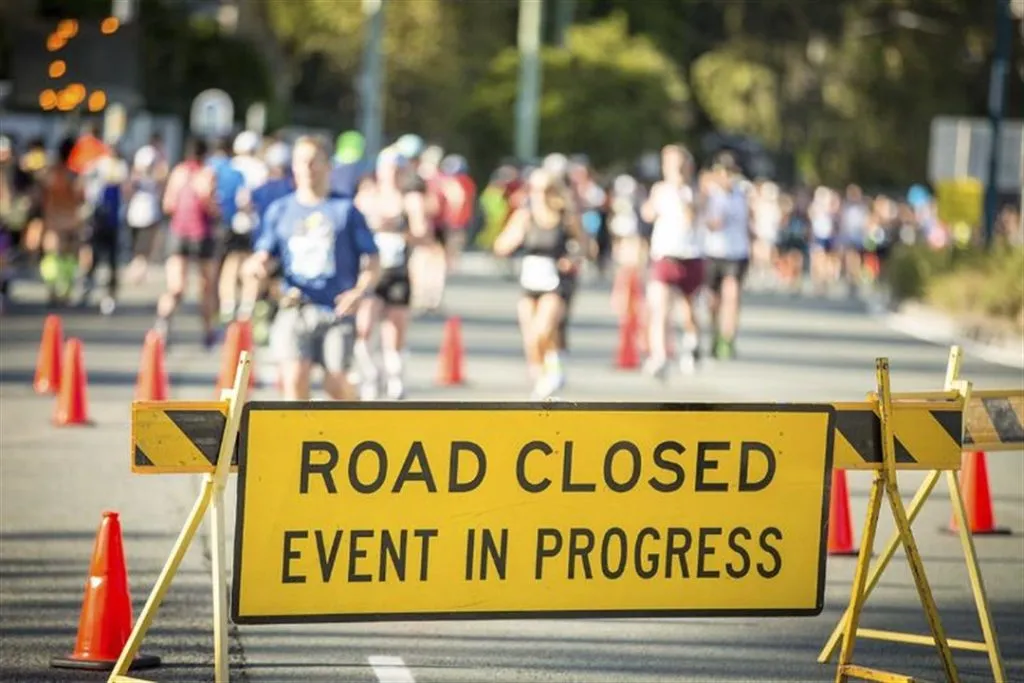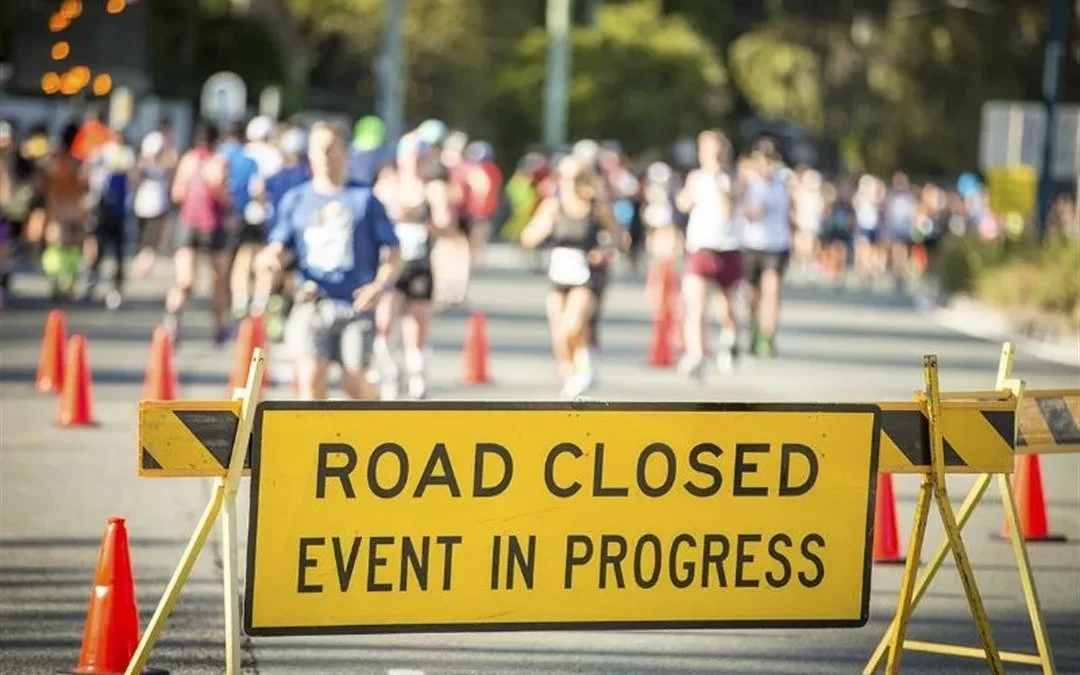Risks associated with event traffic
Where there are cars and crowds, there’s risk! Traffic can be frustrating at any time, but when guests are excited about an event and trying to get there faster, things can escalate quickly. Event planners often think about coordinating traffic, but disaster can occur even before the event starts. Here are just a few common examples of issues that can happen.
- Car accidents
- Crowd management issues, which can lead to injury and security risk
- Pedestrian injury from slips, trips, falls, or vehicles
- Blockages that prevent emergency services from getting where they need to go
While some of these incidents seem unavoidable, many can be prevented with proper planning. Having a comprehensive plan will not only improve guests’ experience, but it will also reduce the risk of a catastrophic event and your liability.

Components of an event traffic management plan
Pre-planning
The first step in developing a traffic management plan for an event is to research best practices. Assess what will be necessary to include based on local ordinances, expected attendance numbers, and the layout of the venue. In some areas, a Temporary Traffic Control Plan (TTCP) may be necessary.
Armed with this information, you’ll be better able to estimate the equipment you’ll need, how many volunteers should be hired, and what’s required to stay legally compliant.
Components of a comprehensive traffic management plan:
When it comes time to make your plan, consider the following factors:
Traffic flow and alternative transit — Map out how traffic will flow into the venue’s designated parking areas. You may need to consider special equipment like channelizers and fencing to avoid congestion on the nearby roads and any resulting pedestrian conflicts. Include local safety services, such as the fire and police departments, in your traffic management plan. These services will be responsible for controlling traffic as it enters and exits the venue. Additionally, factor in alternative transportation like shuttle buses and rideshare areas. Determine how these vehicles will reach designated parking and include that information in your traffic flow plan.
Parking — Not every venue will have clearly marked spots, so you may have to improvise. Use flags, cones, or other markers to designate parking spots, and use volunteers to help guide guests into spots if it’s not immediately clear where to park.
Volunteer safety — Those who are helping direct traffic should have personal safety equipment like vests and flashlights. Be sure to fill in volunteers on your event traffic management plan before the event and determine how you will communicate while it’s happening.
Pedestrian safety — Don’t forget about what happens once guests leave their cars! Ensure walkways into the venue are properly lit. Depending on the layout of the traffic and parking area, you may have to block off specified pedestrian areas.
Roadway signage and problematic intersections — Place appropriate signage along roadways to notify drivers where they need to go. Also, consider placing signs further down the road warning that there may be congestion due to an event. Lastly, be sure to identify any uncontrolled intersections nearby and place signs or a volunteer to help guide drivers.
What to do in an emergency — If something does go wrong, who will be called? Who oversees managing the situation? Include contact info and a process for what to do in an emergency in your plan.
Other considerations and the importance of insurance coverage
Once you’ve developed a plan, communicate relevant details with event attendees. Share traffic and parking information on the event’s website and social media channels so everyone is informed. If guests know what to expect, arriving at and leaving the event will go much smoother.
Planning goes a long way, but unanticipated situations often come up. Be ready to make real-time decisions if things aren’t going according to plan. After the event, evaluate what went well and what didn’t. Take these learnings into your next event with an updated traffic management plan.
Event traffic management is not just about convenience; it’s a critical aspect of ensuring the safety and well-being of attendees and minimising liabilities for event organisers. With proper planning and collaboration, potential traffic-related issues can be mitigated, leading to smoother and safer event experiences. At Right Angle Events, we specialise in comprehensive event planning, including traffic management. Stay updated on the latest event trends and reach out to us at https://rightangleevents.com.au/. Feel free to contact us at 03 9702 9003/043 805 1134 or via email at info@rightangleevents.com.au. Let’s make your next event an unforgettable and risk-free success!
